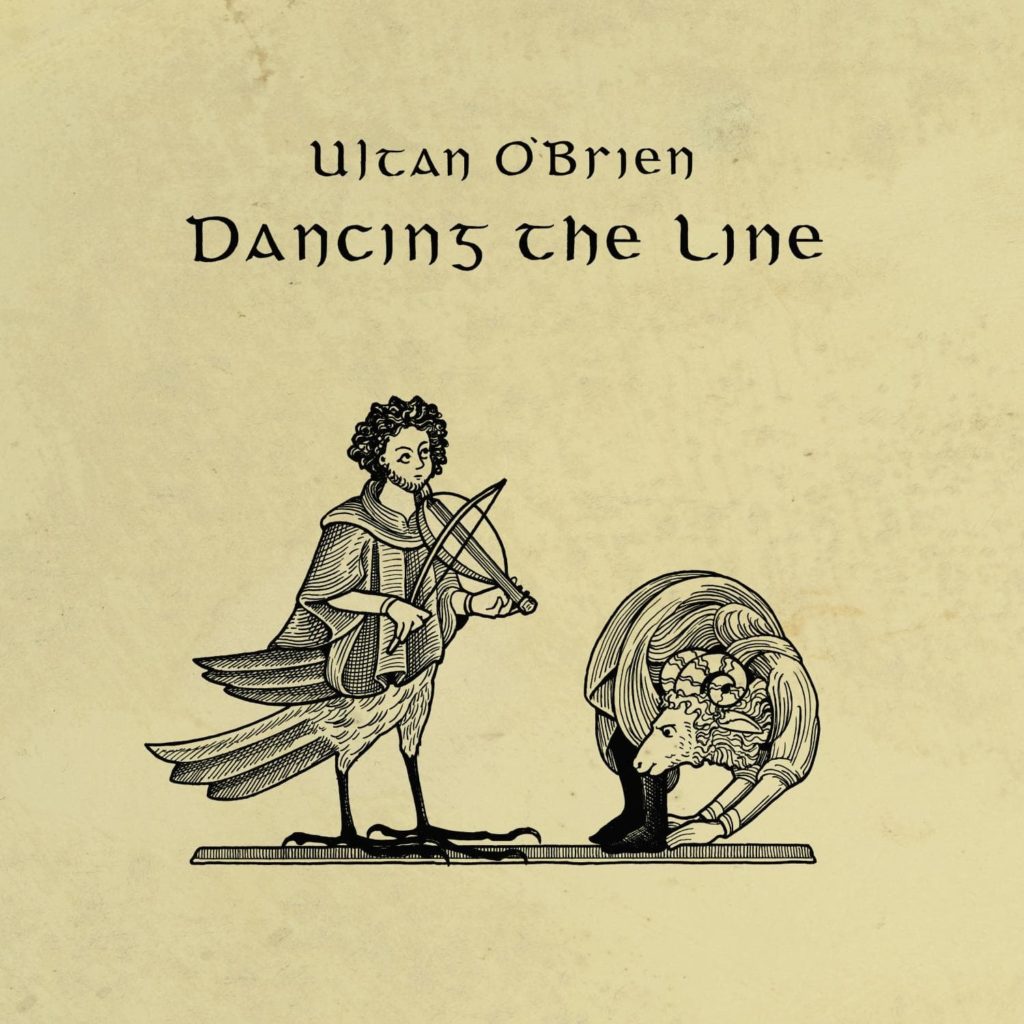The wonderful paradox underpinning Ultan O’Brien's new album Dancing the Line is its ability to sound both familiar and completely new at the same time—holding each half of the contradiction as equally true. That seems about right: there are six traditional tunes and seven new compositions by O'Brien, written in Leitrim and Clare between 2023 and 2024. The new and the old are balanced against each other.
O’Brien was raised in the musical tradition of his home in County Clare and has played and recorded with acts such as John Francis Flynn, Skipper’s Alley, and Eoghan Ó Ceannabháin. There's a strong connection with Clare throughout the album: most tracks were recorded at Malbay Studios in the county, and field recordings from nearby Whitestrand, close to Miltown Malbay, feature heavily. Meanwhile, The Four Courts comes from the playing of Nell Galvin, who was born in Clare and to whom O'Brien dedicates the tune.

He wastes no time getting straight into the thick of things, opening Side A with Iron Mountain Foothills, showing the depth of sound available on the alternatively tuned alto fiddle used throughout the album. "I found that the resonance and growl of this lower-tuned instrument sat me perfectly into the sound-world I wanted to be in, giving vibrancy to my own compositions and nestling into the traditional music I grew up with," O’Brien said of his decision to switch to the alto fiddle for Dancing the Line.
Nic Gareiss's percussive dance, which first appears on the fourth track, The Boyne Hunt—a song O'Brien first heard on the 1951 Alan Lomax recording of Séamus Ennis—energises proceedings. The shuffle of his feet provides a real sense of urgency during the album's busier moments. On The Four Courts, the dance sounds at times like the deep breaths of a concertina's bellows, driving O'Brien's fiddle onward. There are striking moments throughout, particularly when O'Brien suddenly shifts the mood: the abrupt tempo change in Wayside Wonders, or the transition from The Four Courts to Rolling in the Barrel, for example.
The Forde Collection—a canon of pre-Famine traditional Irish music noted by William Forde—also provides three traditional tunes on Side A: It Was in the Year Eighteen Hundred and Four (though O'Brien notes it’s unclear what happened in 1804) and the uplifting pairing of the jigs Domhnall na Griana and The Butcher’s March.
Beyond the exuberant jigs, O’Brien offers expansive slow airs that explore the experimental side of his playing as the record shifts to Side B—O'Brien marking a clear delineation between the two halves. Packie's Pandemonium, from the playing of Packie Manus Byrne from Ardara, opens the second half. It's a luscious track of synth-like, sustained vibrato, followed by the equally rich Banbha's Ruins, with its ebbing and flowing melody. Martin Green’s accordion provides an atmospheric accompaniment, blending with O'Brien’s electronic flourishes.
These are followed by the album’s most experimental pieces: Down in Whitestrand, Secret House in Fintra Beg, and Death Doula Meet close the album. Each features field recordings from Whitestrand near Miltown Malbay, or friends in conversation. You can hear the shared influence with John Francis Flynn on these tracks—it wouldn’t be surprising to hear Secret House in Fintra Beg bleed into Flynn’s version of The Zoological Gardens.
These final tracks, with their found sounds overlaid on ambient soundscapes, owe as much to Brian Eno as to traditional music—which is no bad thing. The result is a stunning and frequently surprising album that presents a vision of music rooted in the traditional genre, yet unafraid to reach beyond its boundaries for inspiration.
Dancing the Line is out now on Nyahh Records available HERE

